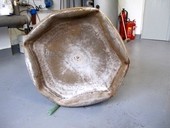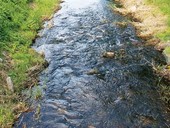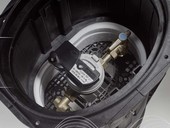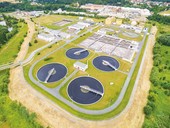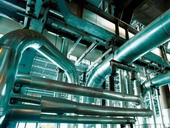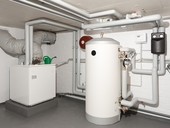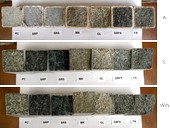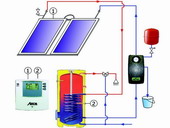The paper deals with the experimental determination of heat losses of reservoirs (hot water storage tanks, heaters, heat reservoirs). It shows how the thermal loss of the tank itself, determined by the correct procedure in accordance with the standard, can be different from the loss of the reservoir connected to the thermal system.
Archiv článků od 30.1.2017 do 28.8.2017
Models where the only solution is either a central cleaning or a balancing basin (the toilets are flushing) are long overdue even in Europe, just after several lines. For example, Germany officially withdrew from the effort to drain the whole country centrally in the 1990s when it judged that such behavior was both non-economic and non-ecological and "unsustainable".
The article deals with the analysis of a possible solution of a non-energy residential building. The analysis shows what energy sources help to achieve a zero balance of non-renewable primary energy and what is not. In the contribution, the investment solution and the real operating costs of the energy-zero residential building compared to the current solution are shown for the selected solution and a simple payback period is set.
The change of Z1 ČSN 75 5411 was mainly processed due to the incorporation of water meter shaft requirements without the need to enter persons (so-called microshaft) into this standard. The current version of ČSN 75 5411 of April 2006 did not mention the water meter shaft without the necessity of entry of persons, and there were doubts as to whether such water meter shafts on the water connections are permissible.
At the time of changing climatic conditions and reducing the quantity of raw material it is necessary to start saving water and raw materials. To achieve this target it is good to separate wastewater at the source and using of no-mix toilets. Czech legislation is not yet adapted to this alternative treatment of waste water.
The paper is focused on the issue of the pipeline networks dilatation. From the perspective of the designer, it is a very simple and well-documented issue. However, as is shown in the article, if the basic requirements are not met when designing the pipeline networks, the results can be quite fatal.
The definition of what is a common part of a residential building is essential especially when modifying the building structures and eliminating defects that affect both a common part and residential units. How common parts are defined affects who finances the modifications and reconstructions of such structures and parts. The definition of common parts is based on the new Civil Code (No. 89/2012 Coll.) and on the already abolished Act on Ownership of Housing (No. 72/1994 Coll.).
For individual payment calculation for hot water we need an invoice from heat supplier with the total cost of the property in CZK and with the amount of GJ. In addition, we need the water supplier invoice, which includes the total cost of water and sewerage. For the calculation then we need water consumption from water meters.
The article deals with the issue of safety valves installation for water heaters. Neglecting of the installation conditions often causes damage to the installed appliance, or (as shown in the paper) loss on the water and sewer charges in the case of a safety valve installed in the water heater safety group.
Sulfate attack is one of the major threats for durability of concrete in sewage collection systems where concrete sewer pipes are exposed to sulfates from waste water as well as from biogenic activity of bacteria. Damage due to sulfate interaction can result in the cracking and softening with loss of strength of concrete and it may lead to the concrete desintegration. Gypsum is the primary product of sulfate attack on concrete, after which ettringite is subsequently formed. Ettringite and gypsum are considerably larger in volume than the initial compounds, which leads to increased pressure within the concrete structure. This paper is focused on the sulfate attack on fine-grained concrete where the effect of 12 months contact of 0.5% sulfuric acid, simulating biogenic sulfuric acid corrosion, 5% sodium sulfate solution and solution simulating sewage water on various types of concrete has been investigated. The concrete specimens were characterized after exposition to the corroding media by their mechanical parameters, changes in pH and content of sulfates. It was found that after one-year exposure to sulfuric acid solution, the compressive strengths of all types of concrete significantly decreased. Sodium sulfate solution and the artificial waste water did not represent the significant corrosion environments for the concretes in terms of their strength reduction, increasing of sulfate ions content and the reduction in the pH of their aqueous leaches. The fine-grained concretes containing metakaolin and ground limestone showed the highest coefficient of corrosion resistance for the applied corrosive solutions.
zpět na aktuální články



